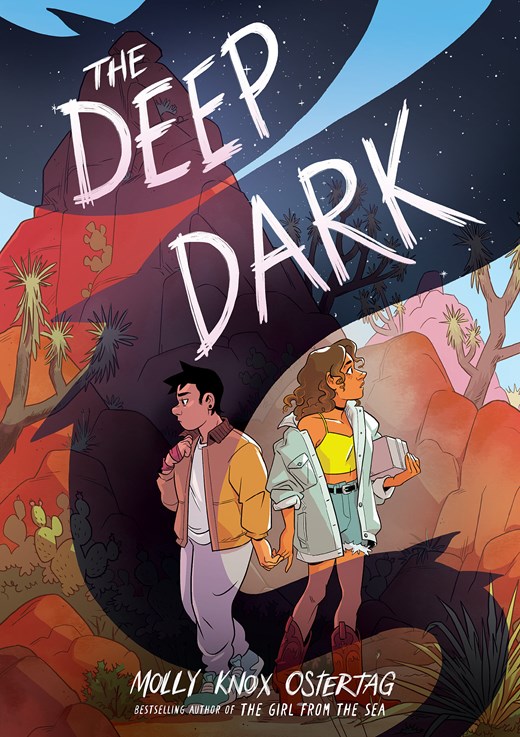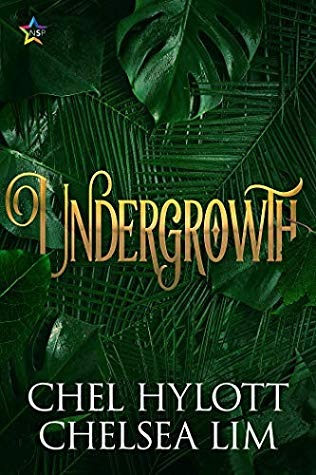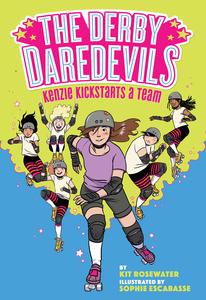Already a fan of Molly Knox Ostertag’s The Girl from the Sea, I had a good feeling about the weighty tome that is The Deep Dark. Friends, this poignant graphic novel delivered and then some. It’s like someone translated the sensation of waiting for the other shoe to drop and described the steps someone would take toRead More
The Queer Graphic Novel That Had Me Sobbing at 3 A.M.: The Deep Dark by Molly Knox Ostertag
Buy this from Bookshop.org to support local bookstores and the Lesbrary! You’re all fired for not tell me how good this is. I liked The Girl From the Sea, so I put a hold on Ostertag’s newest sapphic graphic novel, but I hadn’t heard anything about it, so I my expectations were pretty grounded. IRead More
An Inclusive Magical Boarding School Story: Basil and Oregano by Melissa Capriglione
Buy this through Bookshop.org to support local bookstores and the Lesbrary! Since reviewing Grand Slam Romance, a heartwarming, sexy, and inspiring graphic novel set in the world of a magical queer softball league, I’ve been searching for another graphic novel to scratch that very specific itch. To my delight, Melissa Capriglione’s Basil and Oregano did just that. ThoughRead More
LA as a Not-So-Urban Jungle: Undergrowth by Chel Hylott and Chelsea Lim
Bookshop.org Affiliate Link Seventeen-year-old Mariam finds herself surviving a Los Angeles that has been overrun by a magic jungle of horror. Along the way, she meets a group of other survivors, and together they become a family. But Mariam has her secrets. She magically heals and cannot die thanks to a deal with the devilRead More
Ungovernable Gender Chinese Fantasy: The Water Outlaws by S.L. Huang
Bookshop.org Affiliate Link When a book is described as being about ruthless bandits with unseemly femininity and ungovernable gender, let’s just say that I had little to no choice in devouring every single page of The Water Outlaws by S.L. Huang. It’s a queer martial arts political epic fantasy retelling of a Chinese classic called Water Margin. ButRead More
Nat reviews Errant (Volumes 1-3) by L.K Fleet
Amazon Affiliate Link I’m always impressed by books that are co-written, but a book with three writers?! A menage-an-author? The Errant series is written by L.K. Fleet, the pen name for a trio of writers: Felicia Davin, K.R. Collins, and Valentine Wheeler. For those of you who are very online and have perhaps pined forRead More
Shira Glassman reviews Who We Could Be by Chelsea Cameron
I think this book is going to be chocolate cream pie for readers who are suckers for friends-to-lovers f/f. Who We Could Be by Chelsea Cameron is pitched as (grown) Anne/Diana from the beloved Anne of Green Gables series. Cameron has definitely captured the magic of the conventional girl (Diana, or “Monty” in this book — Montgomery, possiblyRead More
Shira Glassman reviews Wrong Number, Right Woman by Jae
I’d read and enjoyed some fanfic pieces that use the trope of “romance that blossoms when a friendship starts after a wrong-number text responds to the sender,” including a cute “no powers” alternate-universe short with Steve and Bucky, so I was excited to hear that beloved lesfic author Jae had written a whole novel onRead More
Emily Joy reviews Nottingham by Anna Burke
“They will remember when Nottingham’s daughters rose up against you when no one else dared.” Let’s talk about medieval queer women. Okay, actually, let’s talk about Nottingham by Anna Burke. This is the fourth lesbian Robin Hood retelling I’ve read, and I think this one is my favorite. All of them had some things IRead More
Danika reviews Kenzie Kickstarts a Team (The Derby Daredevils #1) by Kit Rosewater, illustrated by Sophie Escabasse
The Derby Daredevils is a middle grade series following a junior roller derby team, with an #ownvoices queer main character. Now, if you’re like me, you’ve already clicked away to order a copy or request it from your library. And that would be the correct response. I am jubilated that we are finally at theRead More



